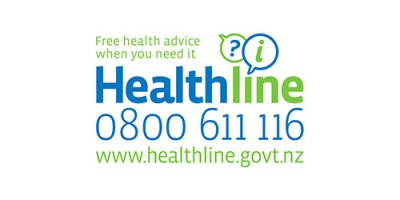Flooding evacuation of Pathways’ aged care mental health facility shows interconnectedness of wider health system
The state of emergency event in Nelson Marlborough demonstrated the benefits of a connected health system which looks beyond traditional silos to ensure whānau-centred care for vulnerable populations. We spoke to Pathways, an organisation that provides a range of mental health services and residential support, about their evacuation experience during the severe weather event.
At four AM, Saturday the 20th of August 2022, Jodi Roberts (Pathways’ Service and Relationship Manager) and Nathan Davis (Southern General Manager for Pathways) received calls to say that the Brightwater aged residential mental health facility was in danger of flooding and the residents would need to be evacuated. The nearby Wairoa River had overflowed and police determined the Bryant Road facility was no longer safe to be in.

Pathways' Bryant Road service before the flood
At first it seemed the group of six would have to venture to an emergency response service in Wakefield, as the Brightwater Bridge into Nelson was iffy. An emergency centre was less than ideal – along with housing, medication, safety, and food, Jodi and Nathan’s priority was to make sure the residents were comfortable. They knew that Pathways’ Halifax Street East location in Nelson could provide this comfort, along with continuity of care: “I was committed to ensuring that the same staff followed these Whaiora wherever they were repatriated to,” Jodi says.
“We have a strong connection and strong care as these are vulnerable people in our community,” Nathan adds.
Luckily the van of six residents and one staff member were able to cross the bridge safely with the support of police. After a short drive the group was welcomed into the Halifax service’s lobby, where they were able to sit down and have a cup of tea. The group was able to return to their usual residence later that day.
“We were lucky enough to be able to get them back to our Bryant Road service by about four, go order some fish and chips, and get them feeling like they’d arrived home,” Nathan says. “That part of the return was really special to see. Collectively our older people and our staff had done really well that day to manage what was a lot of upheaval and quite a lot of uncertainty.”
“Though it was a long day and our Whaiora felt tired and a little bit anxious and displaced,” Jodi says, “they also felt well supported. For some of them it was a bit of an exciting adventure.”
“Not so much for us,” Nathan chuckles.
Though the ordeal fell short of an exciting adventure for Pathways staff, the response to the emergency was well-managed, something Nathan and Jodi attribute to the timely communication from Pathways’ National On Call system and the support received from the Pathways’ Executive Team, as well as connection to the wider healthcare community. As soon as it was determined that the facility would have to be evacuated, Jodi was in touch with Hilary Exton, the Director of Allied Health, Grant Andrews, Manager of Supply Services, and Michael Bland, Interim GM of Mental Health and Addiction services. Additionally, Ernest Rutherford Retirement Village and Alexandra Hospital offered housing when it was not yet determined if Pathways could cross the bridge to return home.
“I am grateful that Michael offered to invite us into the huddle so that we felt a part of that team,” Jodi says. “We certainly felt supported as the Pathways service by Te Whatu Ora. Huge ups to Hilary and her response team. She was really reactive, contacted me immediately, said there will be a response team set up, just let us know what you need. So that was a great start to a long day.”

Flooding from the Wairoa River near the Bryant Road service
“One of the things that we truly believe is that we are all a part of the same system and actually it is just about being able to provide support,” Nathan says. “Equally so if it had been an inpatient unit that had been disrupted for the hospital we would have been trying to help in that same regard, being part of the solution. It's about a generosity of spirit and some of that whanaungatanga around that we are all whānau with vulnerable Whaiora.”
Nathan says that with the change to Te Whatu Ora and Te Aka Whai Ora, the Māori Health Authority he is seeing more collaboration and connection between organisations on the community healthcare level and the secondary care level, building and growing from long-established working relationships.
“We’re working as one health provision and continue to chip away at that kind of siloed thinking that there's the hospital services and then there is everywhere else. We need to be thinking that we are one care resource for our vulnerable populations. This was a good example of collaboration between the organisations.”





